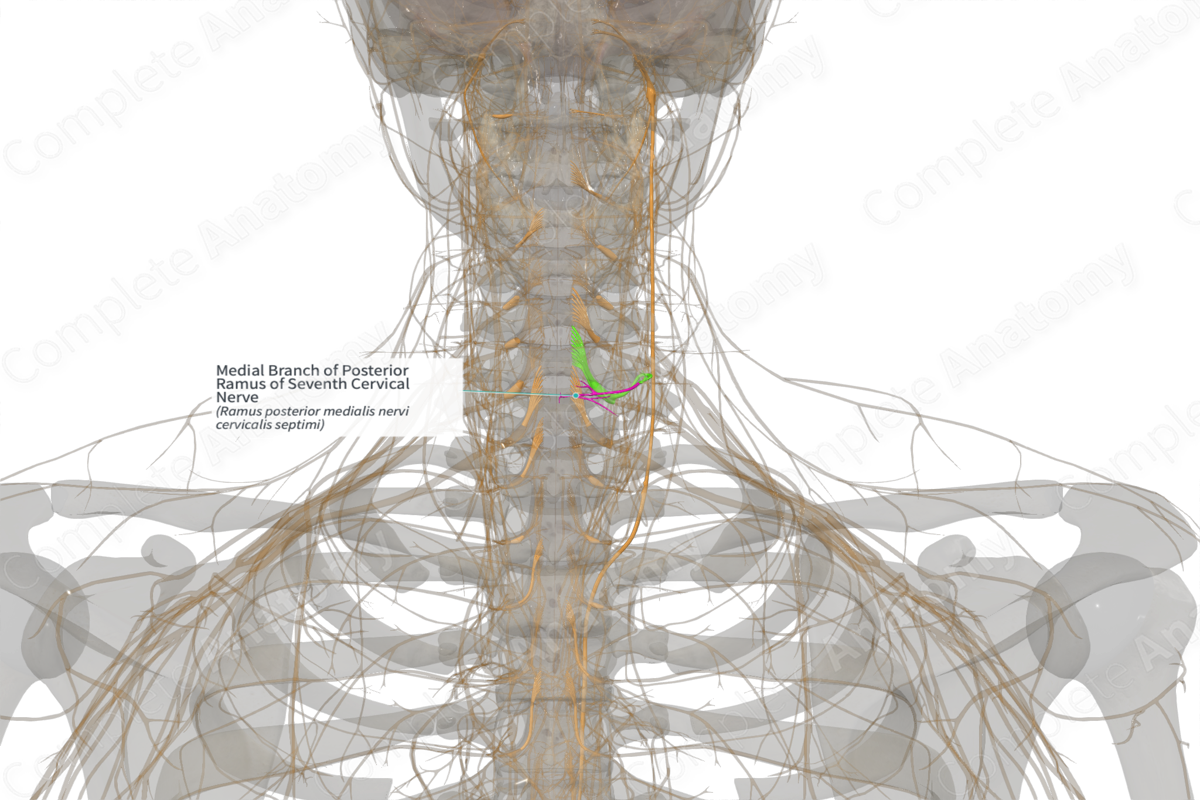
Medial Branch of Posterior Ramus of Seventh Cervical Nerve (Left)
Ramus posterior medialis nervi cervicalis septimi
Read moreQuick Facts
Origin: Posterior ramus of seventh cervical nerve.
Course: Winds medially around the articular pillar of C7 vertebra before terminating into its terminal branches in the multifidus muscle.
Branches: Posterior cutaneous branch.
Supply: Motor innervation to semispinalis capitis, multifidus, and interspinales muscles. Sensory innervation to the skin of the medial back and to the zygapophyseal joints above and below the nerve.
Related parts of the anatomy
Origin
The medial branch of the posterior ramus of the seventh cervical nerve arises from the posterior ramus of the seventh cervical nerve. It is one of two branches, the other being the lateral branch.
Course
The medial branch of the posterior ramus of the seventh cervical nerve winds medially around the side and the dorsal aspects of the articular pillar of C7 vertebra, running deep to semispinalis capitis muscle, before terminating in the multifidus.
Branches
The medial branch of the posterior ramus of the seventh cervical nerve gives rise to a posterior cutaneous branch.
Supplied Structures
The medial branch of the posterior ramus of the seventh cervical nerve provides motor innervation to the multifidus, semispinalis colli, semispinalis capitis, and trapezius muscles, before becoming cutaneous.
Somatic afferent neurons within the posterior cutaneous branch provide innervation to the skin overlying the trapezius and transmit general sensory information regarding pain, touch, pressure, vibration, etc.




